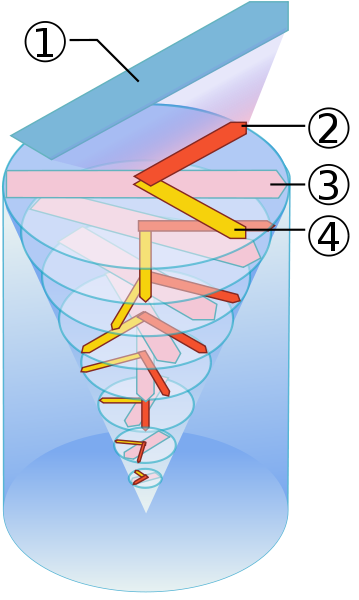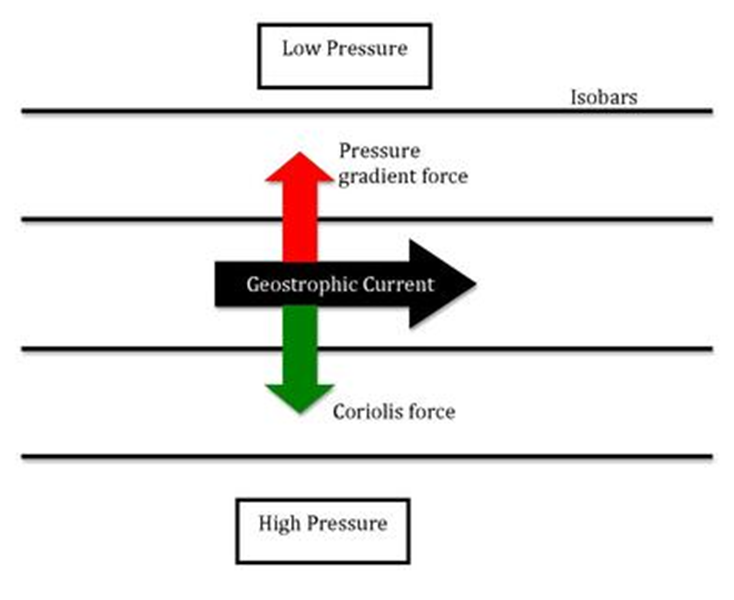Surface Circulation Patterns
Ocean currents:
- transfer heat from tropical to polar regions (and cold from polar to tropical regions)
- influence weather and climate
- distribute nutrients and scatter organisms
What Causes Surface Currents?
The Wind! Energy is transferred from the air (wind) to the sea by friction. This creates a “mass flow” of water.

Flow Within a Gyre - Ekman spiral
The Ekman spiral forms when ocean currents change directions at an angle to the surface winds due to the Coriolis effect. At the surface, water moves to the right of wind direction. The layer below the surface – water moves to the right of the overlying water, and so on... Friction causes each layer to move slower than the overlying one. The net water transport reaches down to ~100 meters.
Think of each of these layers as a vector. If you add up the sum of these vectors the net water movement is 90° to the right of the wind in the northern hemisphere. This net movement of water is called the Ekman Transport.
 |
 |
Western intensification
Water tends to pile up in the direction the wind is blowing. The water pressure is higher in the “piled up” area, and gravity pulls water down the slope. Due to the forces of gravity, the Coriolis effect, solar energy, and solar winds, water often moves in a circular pattern called a gyre. The Coriolis effect causes the water to
- move to the right in the Northern Hemisphere
- move to the left in the Southern Hemisphere
This "hill" of water is not located in the middle of the ocean. Rather, the rotation of Earth pushes the water to the west side of the ocean basins. Water on the west side of the ocean basin must squeeze between this "hill" and the continent, which makes it go faster. Water on the east side of the "hill" as a wider path and therefore slows down. This is called western intensification.

These gyres are also Geostrophic Currents. Geostrophic flow occures when the pressure gradient is in balance with the Coriolis effect. All major surface currents are geostrophic currents.

><< back |
||
